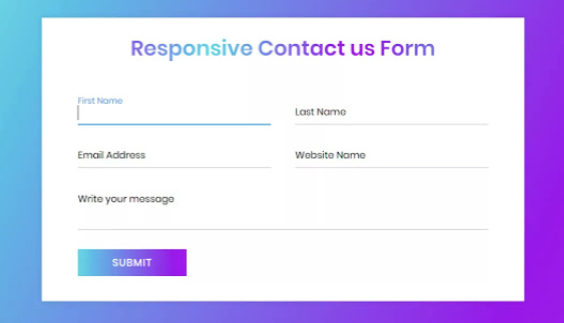Massage therapist
Thanks to different massage techniques, the massage therapist contributes to reducing stress, preventing ailments and improving the condition of its beneficiaries. It can have a positive effect on body posture, relieve back pain, help release tension, etc. It allows a better functioning of the organism, whether it is by soothing pain, improving respiratory capacity, digestion, blood circulation, skin quality or even sleep. The massage therapist promotes awareness of the clean body and provides beneficiaries with soothing, calm, self-worth (self-esteem) and resistance to stress.
At the start of the session, the massage therapist assesses whether his skills are capable of improving the beneficiary's condition or whether he should be referred to another professional. If it can contribute to the well-being of the person, it determines the most suitable massage technique. He can thus use acupressure, lymphatic drainage, Trager, shiatsu, reiki, Tui Na massage, Swedish, Californian or Thai, etc. Depending on the technique selected, the duration of the massage varies between 15 and 90 minutes. The massage therapist must be attentive to any pain or discomfort felt by the beneficiary in order to adapt to it as best as possible. It helps children and adults.
What is massage therapy?
Etymologically speaking, massage therapy means "healing massage". This ancestral therapeutic technique existing for thousands of years was already used by our ancestors in many other cultures and civilizations and brings together a great diversity of manual techniques. Despite differences in philosophy and types of manipulation, these techniques share several common points. Thus, the main objectives of massage therapy are to promote relaxation (muscle and nerve), blood and lymphatic circulation, assimilation and digestion of food, elimination of toxins, proper functioning of vital organs and arousal to a bodily consciousness .As we know it today, massage therapy has simply been perfected, refined, and modernized so that touch becomes a more structured approach. Finally, the opinion of specialists in this therapeutic technique.
The benefits of massage therapy
Massage therapy is suitable for most people, from toddlers to the elderly. Its effects, which can be soothing or energizing, could decrease nervous excitability, relieve conditions caused by stress (including back pain, migraine, exhaustion and insomnia), increase blood and lymphatic circulation and cause a general state of well-being. It also has other therapeutic applications which we will describe below.Massage therapy after pregnancy
Massage therapy is widely used in pregnancy, since it reduces the risk of injury to the perineum during childbirth as well as postpartum discomfort and discomfort, rebalances the body, reduces tension to help the woman regain her body gently, and also to relax and tone the parts that have been stressed and tired by the overload.
From a psychological point of view, massage therapy promotes better moral recovery, and helps prevent the symptoms of baby blues, but also reduces stress and fatigue thanks to its relaxing effects.
Massage therapy to relax
The beneficial effects of massage therapy on anxiety have been observed in numerous studies: due to its relaxing properties, massage therapy makes it possible to better manage anxiety-provoking situations and events in everyday life.
Relieve lower back and muscle pain
Numerous studies have demonstrated the effectiveness of massage therapy in the treatment of acute or chronic non-specific low back pain, particularly when massage is performed by accredited therapists and combined with exercise and education programs.
Massage therapy helps relieve lower back pain by stretching the pelvis, legs and lumbar region, which will generate a feeling of well-being and muscle relaxation.
It happens that certain back problems are consecutive to a problematic abdominal musculature, in these cases, massages in the abdomen can be beneficial.
Improve the quality of life for people with cancer.
Several studies have concluded that massage therapy has significant benefits, especially in the short term, for people with cancer. Indeed, massage therapy improves the degree of relaxation, mood as well as the quality of the patient's sleep. It also decreases the fatigue, anxiety, nausea and pain of patients, which contributes to an improvement in the response of the immune system. In addition, another clinical trial showed that massage therapy greatly improved the mood of women caring for their spouses with cancer, in addition to significantly reducing perceived stress.
Improving the growth of children born prematurely
Different positive effects of massage in premature newborns are reported in the scientific literature. For example, it could influence weight gain and promote performance in developmental tasks, bone formation when combined with physical activity and visual acuity. It would also decrease the time of hospitalization, the level of stress during hospitalization and improve the neurological development measured at 2 years.
However, most of these findings are based on clinical trials comprising samples of small sizes and often with methodological shortcomings. This is why it is not possible, for the moment, to comment on the effectiveness and relevance of the massage.
Contribute to the treatment of constipation.
A study has shown that abdominal massage sessions can help reduce the severity of certain gastrointestinal symptoms, such as constipation and abdominal pain, and also increase the number of bowel movements.
Contribute to the treatment of fibromyalgia
Some research has found significant positive effects on fibromyalgia symptoms, such as reduced depression, pain and pain reliever use, improved mobility, sleep and quality of life and a decrease in the feeling of helplessness. However, some studies have pointed out that most of these effects do not persist in the long term and that massage can be very painful under these conditions. However, in the long run, it could lead to a reduction in general pain which would compensate for this inconvenience.
Contribute to the treatment of attention deficit hyperactivity disorder (ADHD)
Some trials have shown some positive effects of massage on ADHD, such as a decrease in the level of hyperactivity, an increase in time spent on the task as well as an improvement in mood, behavior in class and feeling of well-being.
The different types of massage
Massage therapy is practiced mainly with the fingers and hands, but also with the feet, elbows and even the knees. Depending on the technique used, the maneuvers can be applied to the whole body or to a single part. We can focus mainly on the skin and muscles or go deeper into the tendons, ligaments and fascia or even target specific points located along the acupuncture meridians. Although we can easily list more than 100 different massage and bodywork techniques, 1 we can group them into 5 main categories.- The European tradition of massage physiotherapy, based on the principles of Western anatomy and physiology and the manipulation of soft tissues, including Swedish massage, is the classic method.
- The modern North American tradition, also based on the principles of Western anatomy and physiology, but which incorporates a bodily dimension to traditional concepts. These include Californian massage, Esalen massage, Neo-Reichian massage and neuromuscular massage.
- Postural techniques, aimed at reshaping the body structure by re-educating posture and movement, such as postural integration, Rolfing, Trager and Hellerwork. Although they share certain points in common with these techniques, somatic education approaches, such as the Feldenkrais method and the Alexander technique, are not considered as forms of massage therapy.
- Oriental techniques, based among others on the principles of Traditional Chinese Medicine , such as Tui na massage, acupressure, shiatsu, reflexology and Jin Shin Do.
- Energy therapies, inspired by ancient healing practices using the laying on of hands, such as therapeutic touch, Reiki and polarity.
The massage therapy session
Massage therapy covers a wide variety of techniques, which is why the course of the sessions varies considerably. Indeed, depending on the technique used, massage can be performed on a naked or dressed person, in a prone or seated position, with or without oil. It can be performed on several types of support: massage table, futon on the floor, ergonomic chair. As for the places of massages, these are also very diverse: centers, groups of therapists, at home, at work, in private practice ... The environment and the context (comfort of the room, massage equipment, brightness, noise ) are very important and have a great influence on the smooth running of the massage.At the beginning of the session, the massage therapist talks to the person who consults him in order to assess his needs, his desires, and to choose with him the type of massage to be given. During the massage therapy session, the masseur performs various gestures depending on the practice used on the body of the massage recipient. During the sessions, massage products can also be used such as massage oil, essential oils, creams ... in order to complete the effectiveness of the gesture and bring certain complementary virtues.
Traditionally, the classic massage is provided for one hour, but the sessions can vary from 20 min to 2 hours depending on the type of massage and the problem of the individual. For example, the seated amma massage adapted to the business world, can cause deep relaxation in just 20 minutes, while certain African massage techniques, or even Shiatsu, may require sessions lasting from 1:30 to 2 hours.
There are some rare contraindications to massage therapy, especially in the event of an inflammatory process, fever, fractures, recent wounds or bruises. In addition, since massage increases blood pressure and lowers the heart rate, it should be preceded and followed by an evaluation of these parameters when it is carried out on patients sensitive to these modifications. In case of circulatory disorders (phlebitis, thrombosis, varicose veins), cardiac (arteriosclerosis, hypertension, etc.) and diabetes, medical advice should be obtained.
Become a massage therapist: the profession of physiotherapist masseur
In practically all European countries, training in massage physiotherapy is spread over 3 or 4 years. It is even possible to follow a university course up to the master's and doctorate levels, as is the case in Belgium. From one end of Europe to the other, the standards applying to the training and practice of massage physiotherapy are however very disparate. The World Confederation for Physical Therapy, an international organization of more than 100 professional associations specializing in body therapy, works to standardize curricula and practice internationally.
History of massage therapy
Texts and illustrations have shown that massage is part of traditional Chinese medicine, 4,000 years old, as well as Ayurvedic medicine from India. Manual healing techniques have also been used in Egypt and Africa for more than 4,000 years.
In the West, the practice dates from the Greco-Roman era. Among the Greeks, passionate about beauty and physical education, massage was part of popular culture. It was customary in gymnasiums and palestrials to follow a bath with good friction with oils. Hippocrates (460-377 BC), the "father" of Western medicine, used it as a method of treatment.
On the other hand, among the Romans, massage had no therapeutic connotation. It was practiced in public places (rest rooms, gymnasiums, massage workshops), later transformed into places of debauchery, which contributed to the bad reputation of massage and its prohibition by the clergy. It was at the end of the Renaissance that some doctors reintroduced this practice.
Since Harvey's discovery of blood circulation in the 17th century, massage therapy has gradually become part of health care. From the 1960s, after a few decades of dominance of technology and pharmacology in modern medicine, there was a renaissance of a more holistic medicine, including massage and bodywork techniques.
Currently, massage therapy is regulated in 3 Canadian provinces (Ontario, British Columbia and Newfoundland and Labrador) and in twenty American states. In Europe, the professions of physiotherapist and masseur-physiotherapist are recognized. In Germany, the practice is covered by the health insurance scheme. In China, it is fully integrated into the health care system.




Comments
Post a Comment
Dont abuse .